Kiev, the last stop in our two-week tour of the USSR, is known as the “Mother of Russian cities”. Its significance for the emergence of Eastern Slavic civilization is gauged by the name by which the first Russian state is known to history – Kievan Rus. In the 9th and 10th centuries CE Kiev was the seat of powerful rulers who converted the Eastern Slavs to Christianity, subdued the nomadic tribes of the steppe, and carried on trade with the Byzantine Empire, which became their cultural paradigm. Eclipsed for centuries by the rise of rivals to the north and the Mongol conquests of the 13th century, Kiev eventually regained prominence as a provincial capital of the Russian Empire, of which it was the third largest city after Moscow and St. Petersburg. In the Soviet Union Kiev became the capital of the Ukrainian Soviet Socialist Republic; and after the collapse of the Soviet Union in 1991, Ukraine became an independent state, with Kiev as its capital.
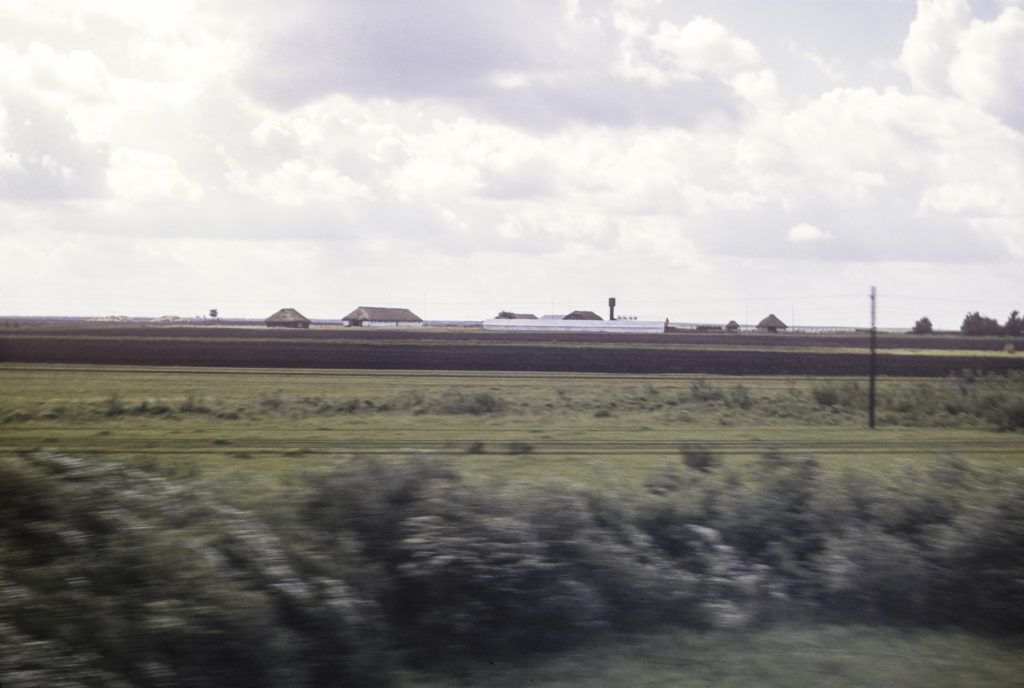
Kiev is a very green city, with lots of trees and parks. I wouldn’t have expected this, because I always think of the Ukraine as being a treeless steppe. Not so Kiev.
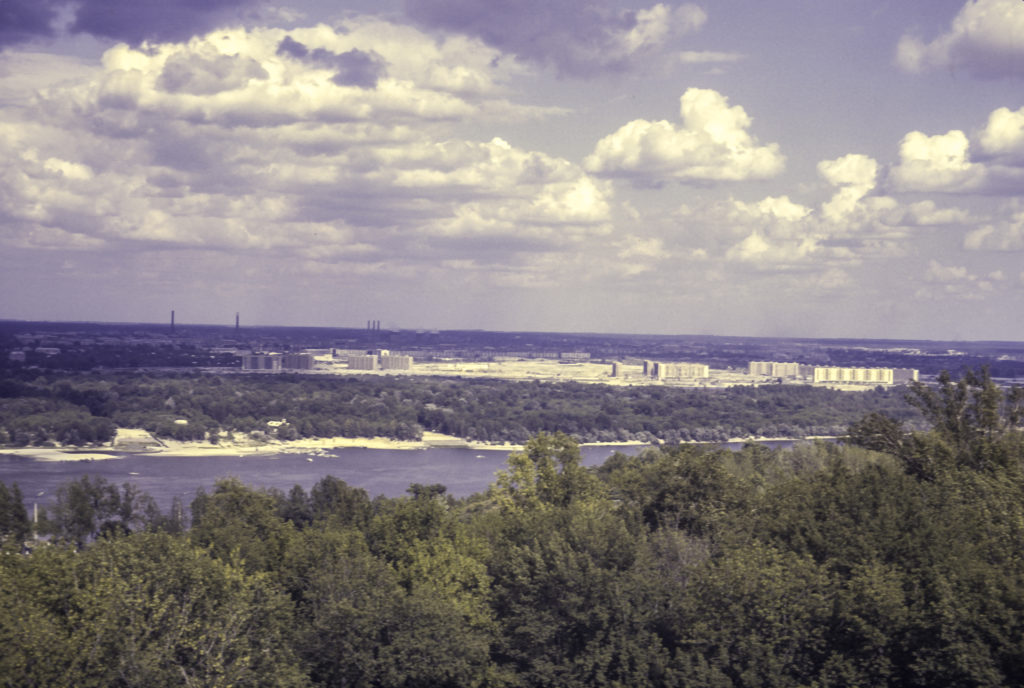
Kiev was originally built on the west (“right”) bank of the Dnepr River, and did not expand to the east (“left”) bank until the 20th century. The city center and most of its attractions are on the right bank, with the left bank (at right in the picture below) consisting of residential and industrial districts.
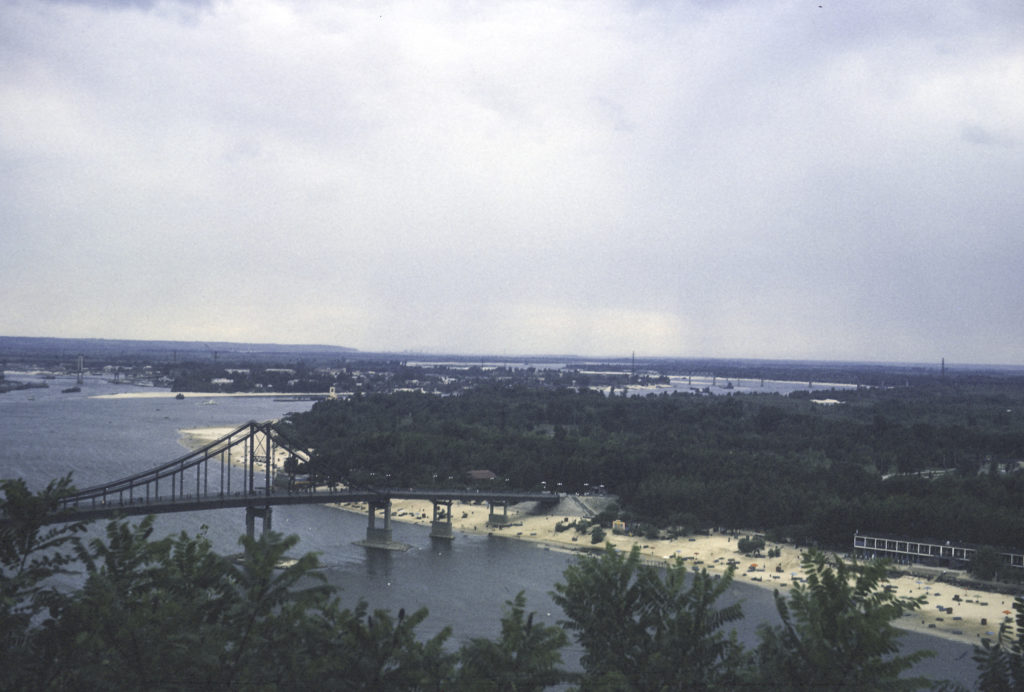
We spent our first day in Kiev visiting its two major historical and religious sites, the Pecherskaia Lavra and the Cathedral of St. Sophia.
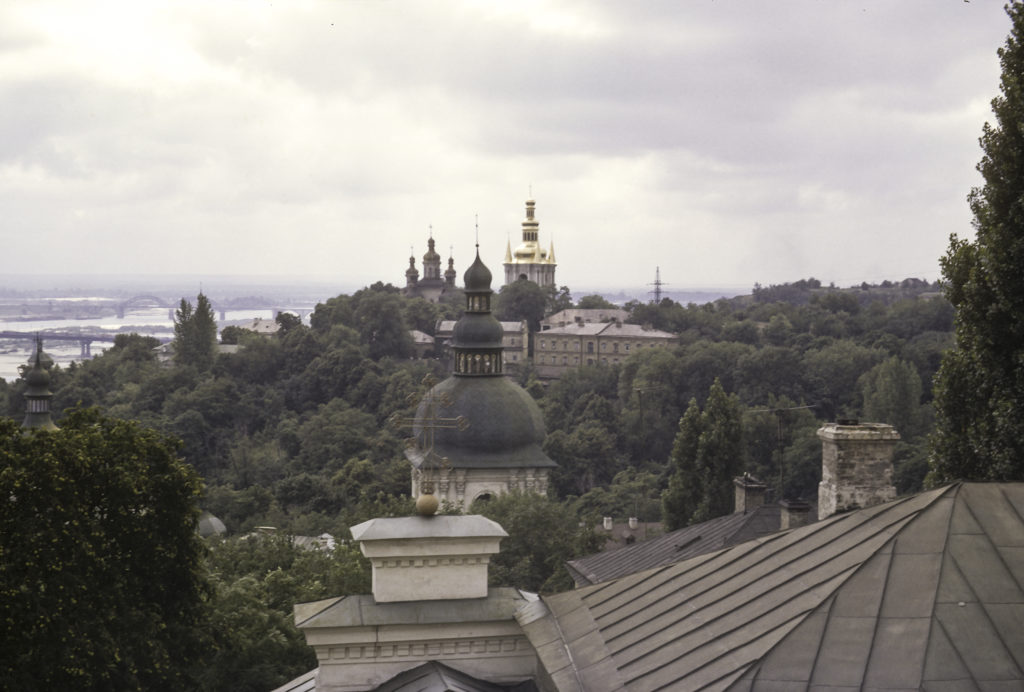
Pecherskaia Lavra is best translated as “Monastery of the Caves.” Founded in the eleventh century CE, it soon became one of the most important centers of Orthodox Christianity in Eastern Europe, and has remained so ever since. It functions both as a museum and a working monastery, the headquarters of the Ukrainian Orthodox Church.
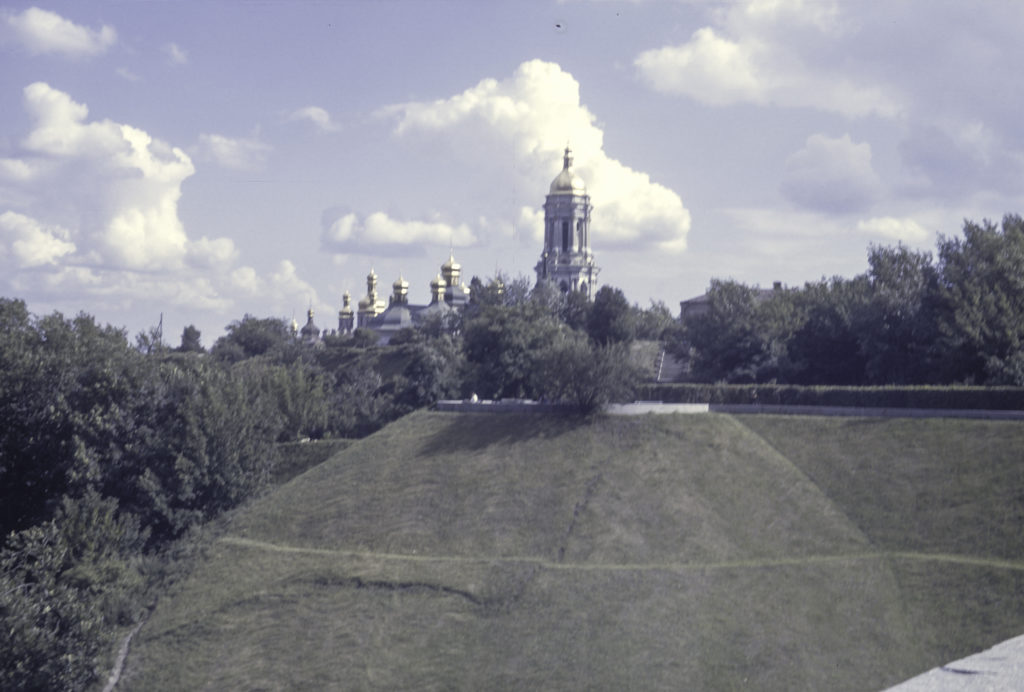
There are indeed caves at the Pecherskaia Lavra, and the monks lived in them and are buried in them. We toured the caves, as well as the rest of the complex, and viewed the remains and relics of the monks in the catacombs as well as various objets d’art – icons, crucifixes, chalices, textiles, etc. – in the museum collections.
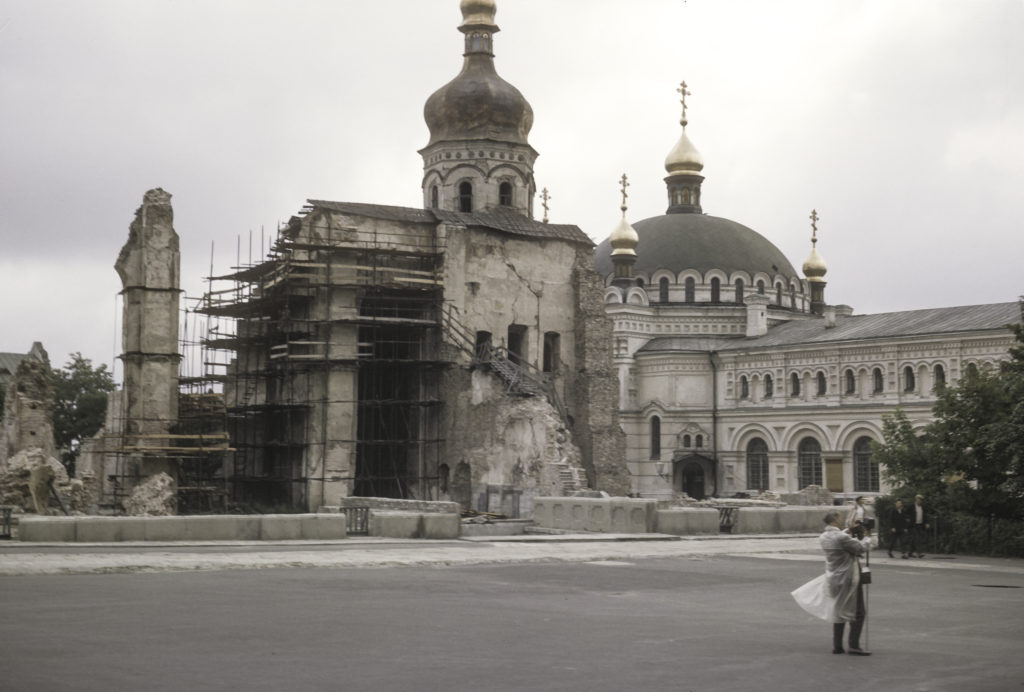
The monastery suffered extensive damage during World War II; its main church, the Dormition Cathedral, was destroyed, and for years afterward the Soviets dragged their heels on restoration work – the cathedral was not fully reconstructed until 1995, after the Ukraine became independent. But the Refectory Church, shown at right in the picture above, dating from the nineteenth century, was impressive.
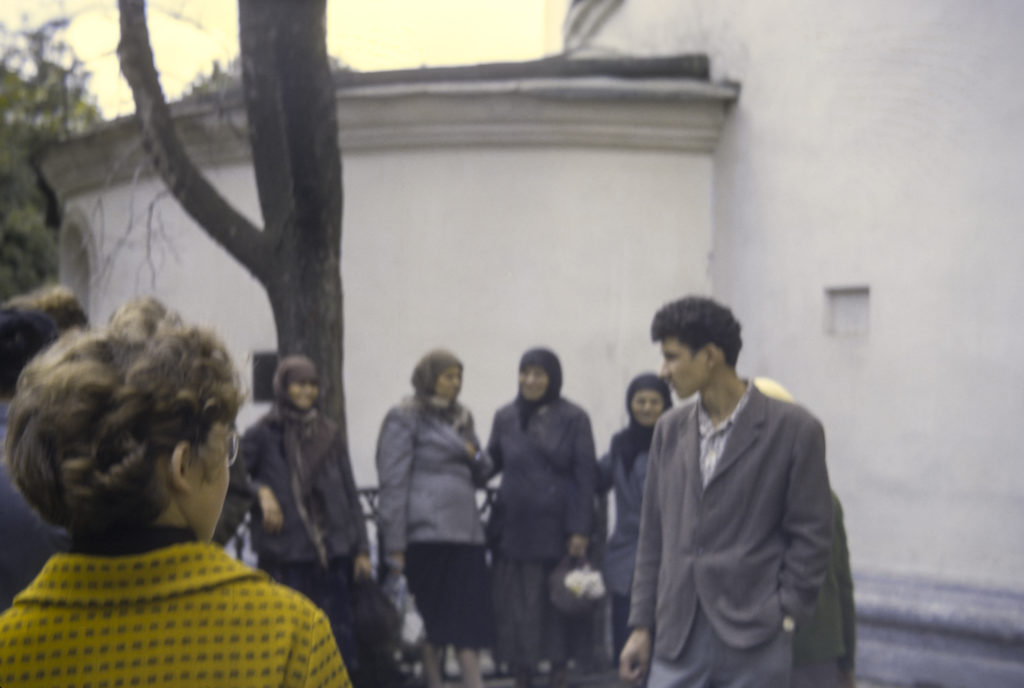
While strolling the grounds of the monastery, I was able to sneak a shot of some citizens who might not have consented to be photographed if I had asked. It was mostly old retired folks, especially elderly women, who frequented churches and other religious institutions in the Soviet era. Young people usually avoided them, since it could hurt their career or employment prospects if they were found to have religious inclinations. But there were exceptions, of course, and in any case the monastery was a tourist site as well as a religious institution.
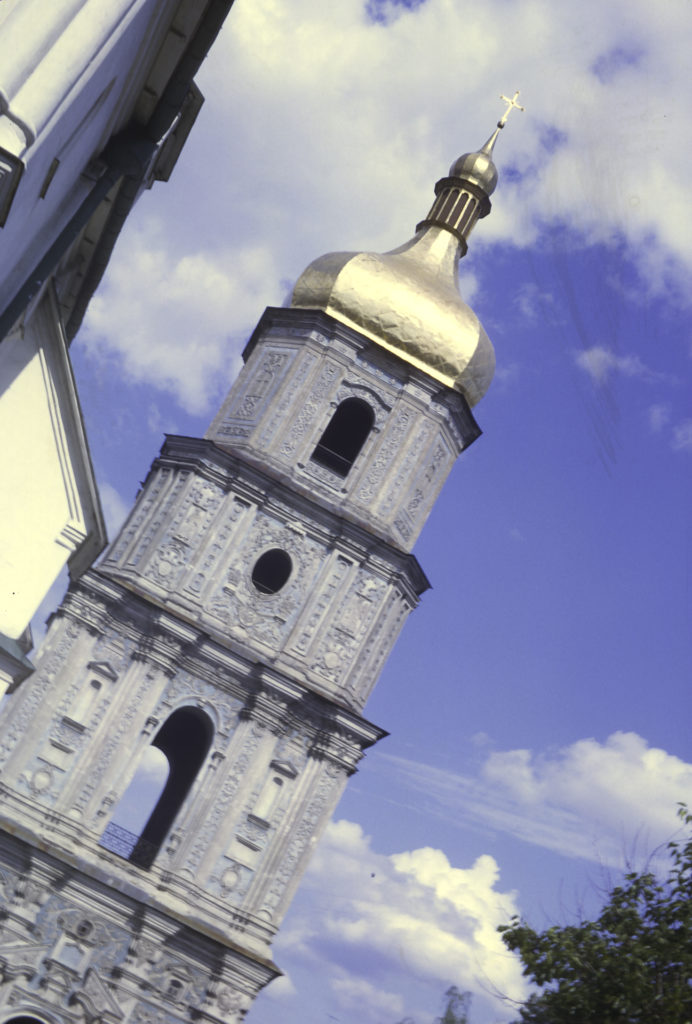
The crowning glory of the Pecherskaia Lavra is its bell tower, seen in the picture above. I had to take the picture at an angle because that was the only way I could get the tower to fit in the frame from my vantage point – and even then I had to chop off part of the bottom. In the next picture, which I took from a vantage point further away, I managed to squeeze in the entire tower, except for the cross on top. Also, I was facing into the sun, so that the tower is shaded, and the streetcar wires got in the way. But it was the best I could do with the time and equipment I had.
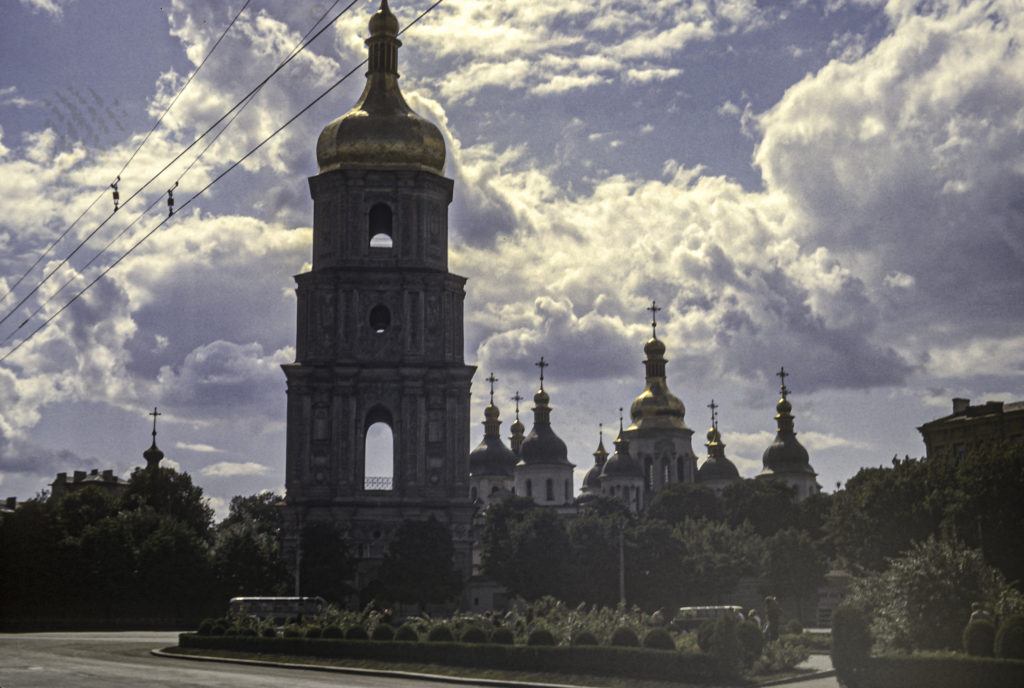
Our next stop was the Cathedral of St. Sophia. First built in the early eleventh century, only a few decades after the Kievan Grand Prince Vladimir initiated the conversion of his realm to Orthodox Christianity, the cathedral was inspired by the church of Hagia Sophia in Constantinople. Somehow it survived the myriad episodes of pillage and destruction which afflicted Kiev in the ensuing centuries, though only barely, and in an advanced state of decrepitude. In the seventeenth century efforts to restore the cathedral began, and the exterior was rebuilt in the Ukrainian Baroque style. The work continued into the eighteenth century, with new additions such as a bell tower being added.
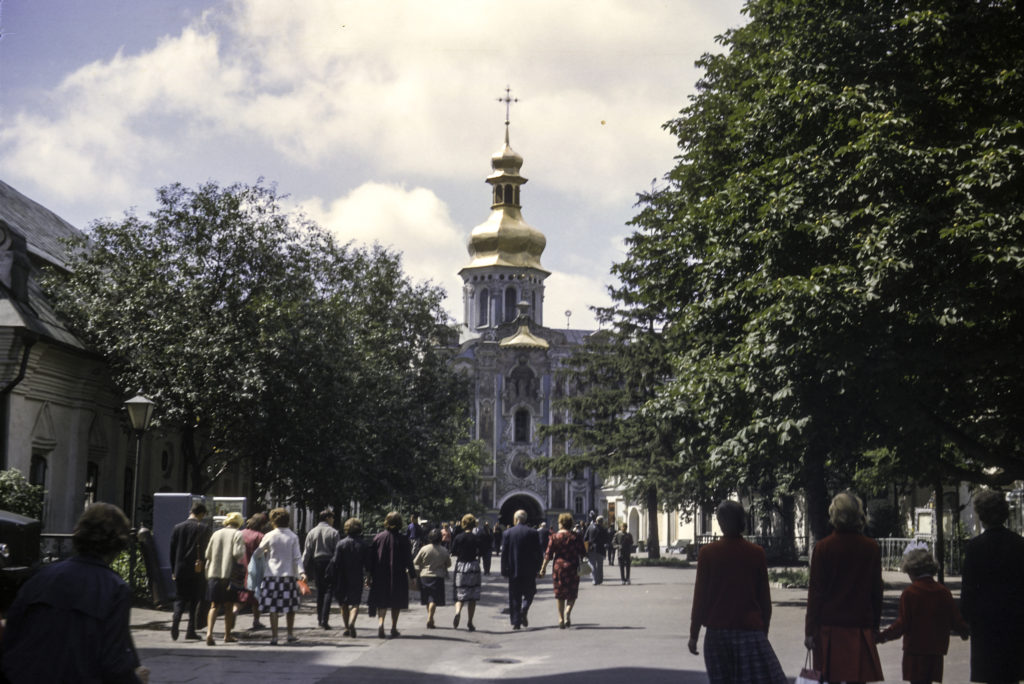
In the 1930s the Soviet regime confiscated the cathedral and laid plans to demolish it and turn the grounds into a park, but in the end was dissuaded from this course by the pleas of prominent scientists and historians. Instead, the regime converted the cathedral complex into an architectural and historical museum, which it remains to this day, although the Ukrainian government has allowed Orthodox services to be conducted in it at times.
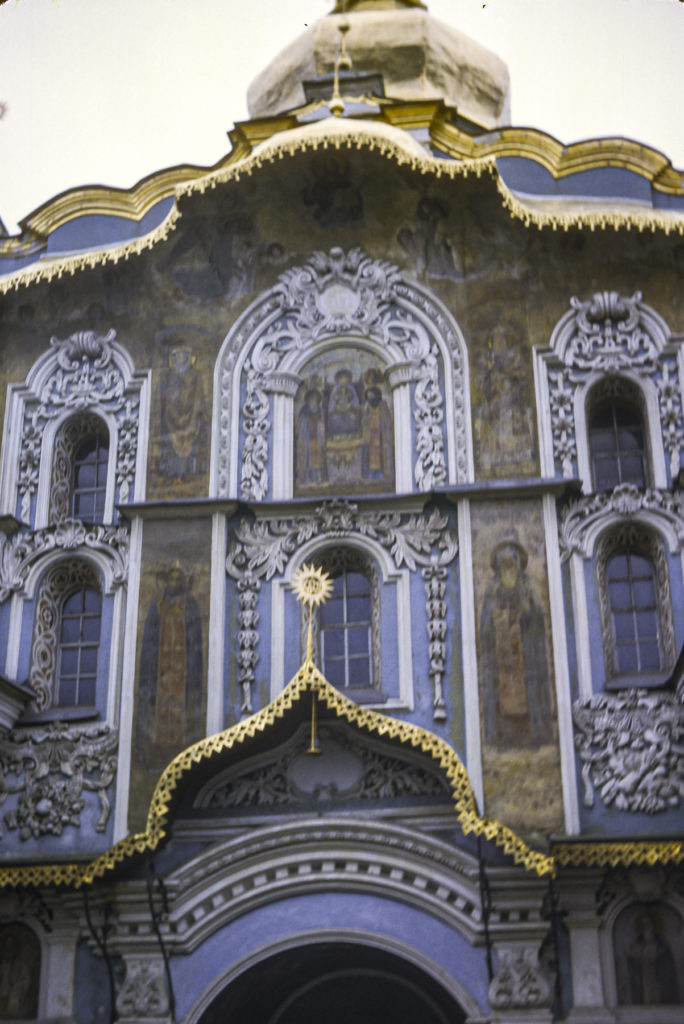
Both the St. Sophia Cathedral and the Pecherskaia Lavra are considered part of the same UNESCO World Heritage site, although the two are located in different districts of the city of Kiev.
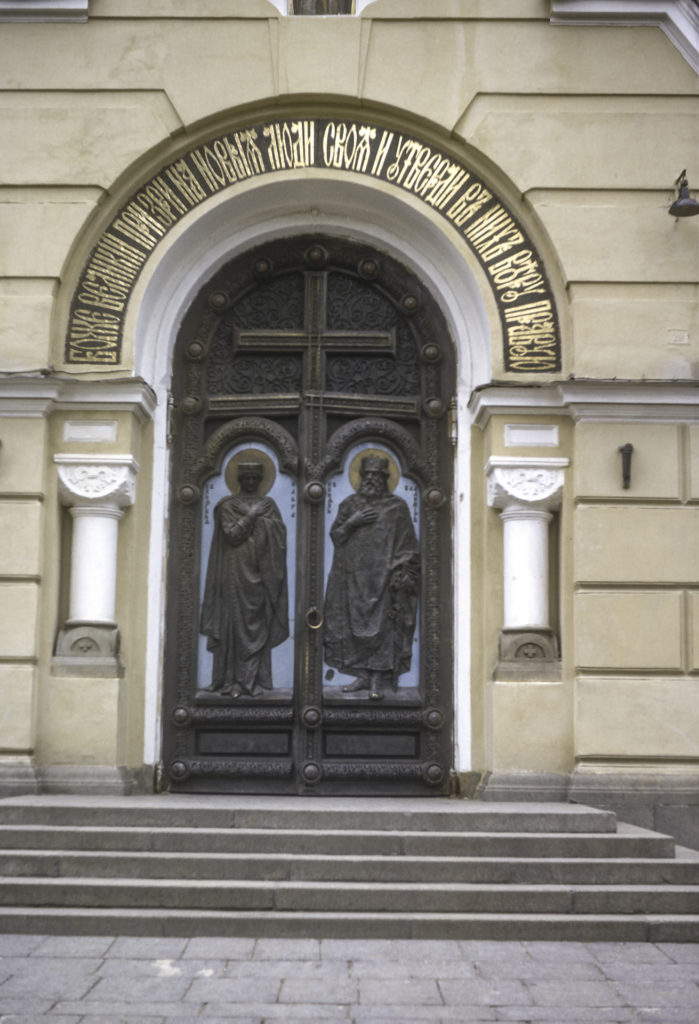
By the seventeenth century much of the territory today known as Ukraine had become a possession of the Commonwealth of Poland-Lithuania, then the most powerful state in Eastern Europe. But the inhabitants found Polish rule oppressive, and meanwhile another power was arising on the steppe – the Cossacks, bands of freebooters who welcomed into their ranks the castoffs of all the neighboring lands. In 1848 a dispossessed landowner, Bohdan Khmelnitsky, was elected Hetman – leader – of the Cossacks of the Zaporozhian Host and raised the standard of revolt. After a series of victories, Khmelnitsky entered Kiev with his forces just before Christmas, and the cheering townspeople greeted him on Sophia Square, then the main square of Kiev. In 1888, the monument featured in the photo below was installed on Sophia Square to commemorate the events of 1848.
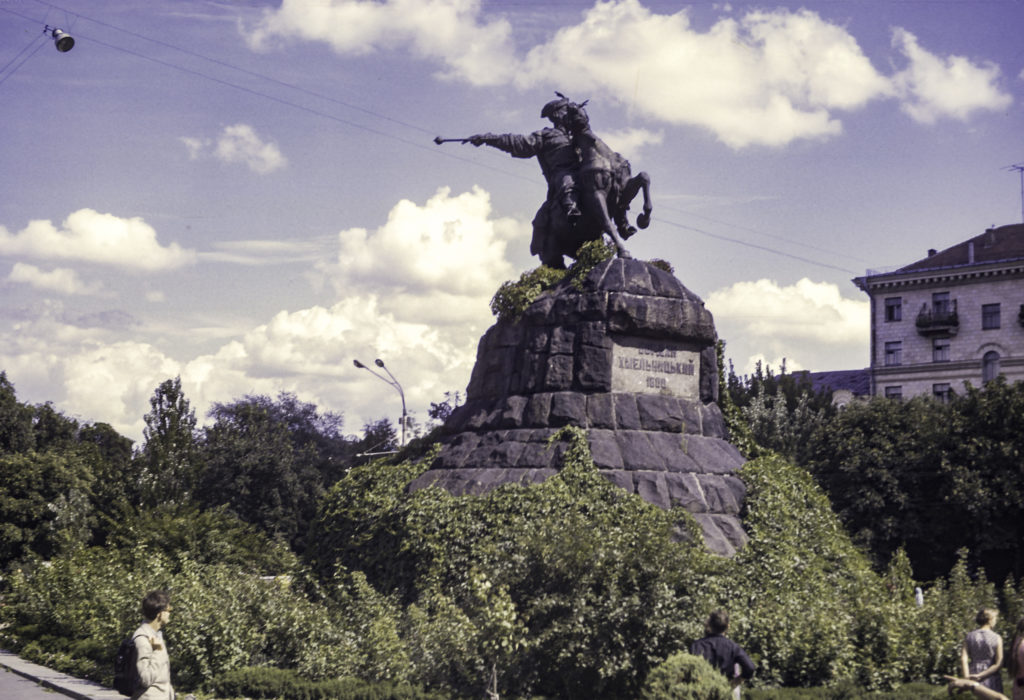
Khmelnitsky’s uprising began a long and incredibly complicated series of conflicts involving all the countries of Eastern Europe, and in the end leaving Poland and Lithuania destitute and no longer a Commonwealth, and Ukraine under the sway of Moscow, soon to be transformed into the Russian Empire under Peter the Great.
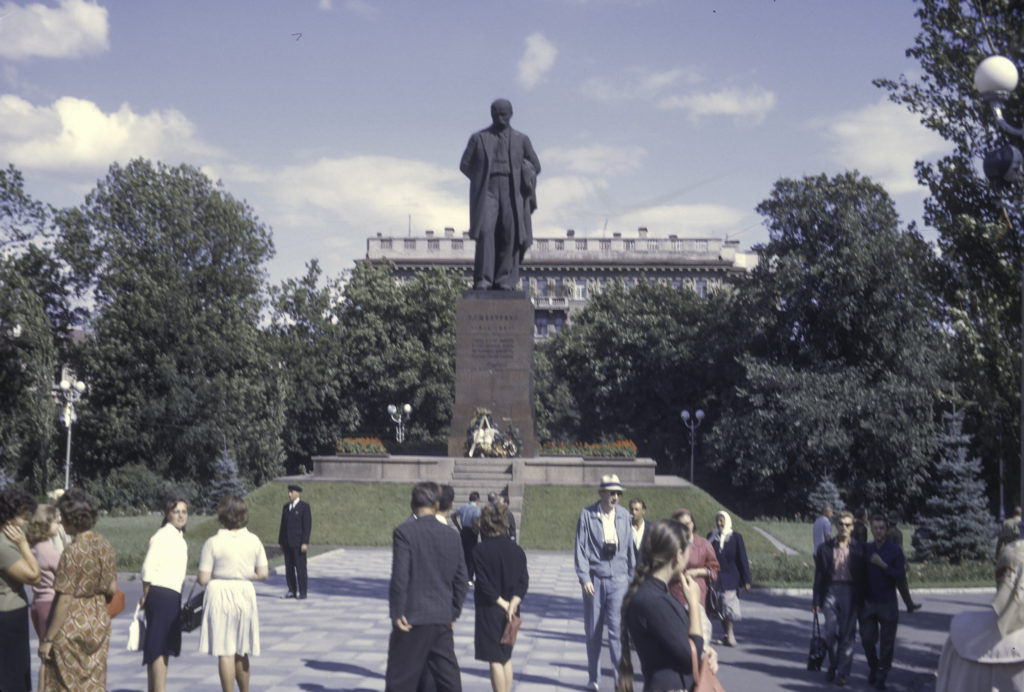
Taras Shevchenko (1816-1861) was born a serf in a Ukrainian village. By hook or crook he managed to obtain a smattering of elementary education and also discovered a talent for painting. His master, a wealthy landlord, once had him whipped for painting a portrait surreptitiously, without permission, but later, realizing that he could use Shevchenko’s talent for his own gain, sent him to study in a studio in St. Petersburg. There Shevchenko met other artists and intellectuals, who helped him buy his freedom in 1838. Shevchenko also began writing poetry as a serf, and his first collection of poems was published in 1840. Over the next few years, while still residing in St. Petersburg, Shevchenko made several trips to the Ukraine, and, finding himself distressed by conditions in his homeland, became involved with a secret society called the Brotherhood of Sts. Cyril and Methodius, dedicated to Ukrainian national rebirth and independence. The society was soon exposed and suppressed by the Tsarist regime, and Shevchenko, whose case was personally investigated by Tsar Nicholas I, was sent into exile as a private in the Imperial Russian army, and for good measure forbidden to write or paint. The long exile, under harsh conditions, broke his health; although he was given amnesty in 1857 by Tsar Alexander II, he died in St. Petersburg in 1861, at the age of 47. Although famous in life both as a painter and a poet, he is now mostly known for his literary impact; though he had important predecessors, he is nevertheless considered to be the founder of the modern Ukrainian language. In an ironic turn of historical justice, the university founded in Kiev by Shevchenko’s persecutor Nicholas I, is now named the Taras Shevchenko National University of Kiev.
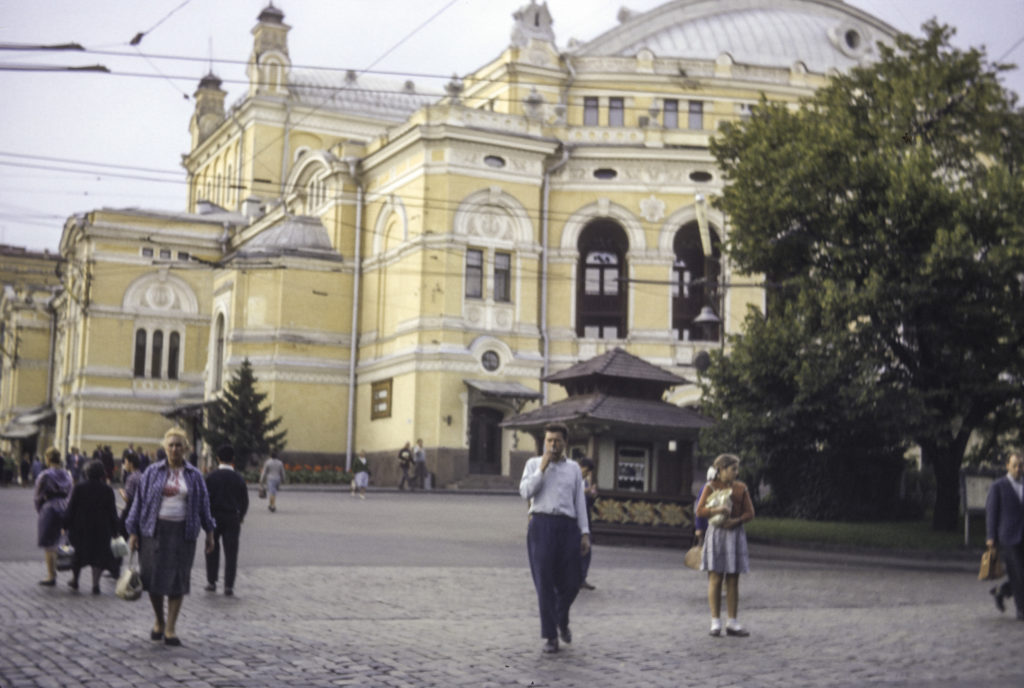
The Kiev Opera was established in 1867. After the first building in which it was housed burned down (1896), a new one was built, which opened in 1901. It was considered to be one of the finest in Europe, and was patronized by the Imperial family. On September 14, 1911, a performance of Nikolai Rimsky-Korsakov’s opera The Tale of Tsar Saltan was held there. Attending the performance were Tsar Nicholas II, two of his daughters, and a number of high officials including Pyotr Stolypin, Prime Minister and Minister of the Interior since 1906. During an intermission, despite the presence of 90 guards, a man named Dmitry Bogrov, a revolutionary who also happened to be a double agent working for the Okhrana, the Tsar’s secret police, shot Stolypin, who died a few days later. Bogrov was quickly tried and hanged. The episode has been shrouded in mystery and controversy ever since, especially regarding the motives and actions of the assassin. Stolypin had been conducting a somewhat successful agrarian reform program aimed at assuaging discontent among the agrarian population and creating a class of peasant landowners who would support the regime; his efforts were anathema to both the revolutionaries, who aimed at maximum destabilization, and the most right-wing elements in the government, who found Stolypin too liberal. In killing Stolypin, was Bogrov trying to fulfill the agenda of the revolutionaries, or of the reactionaries, or both? Nobody really knows for certain, and the question remains unresolved to this day.
Sputnik did not maintain a full schedule while we were in Kiev, and we were fortunate to have some time to explore the city and become acquainted with parts of it not associated with the usual tourist attractions. One evening Bob Barrett, our group leader, took a couple of us with him to visit a friend in his Kiev flat inside one of the typical post-World-War-II Soviet apartment block-buldings (see picture below). I don’t remember the name of the friend or how Bob had become acquainted with him in the first place. But I do remember his television set, which was one of those ancient tiny-screen models with a magnifying glass in front of the screen to make the picture look bigger. And I remember him telling us that he was happy with the way things were going, because he was enjoying what he considered a decent standard of living and his situation had been improving year after year.
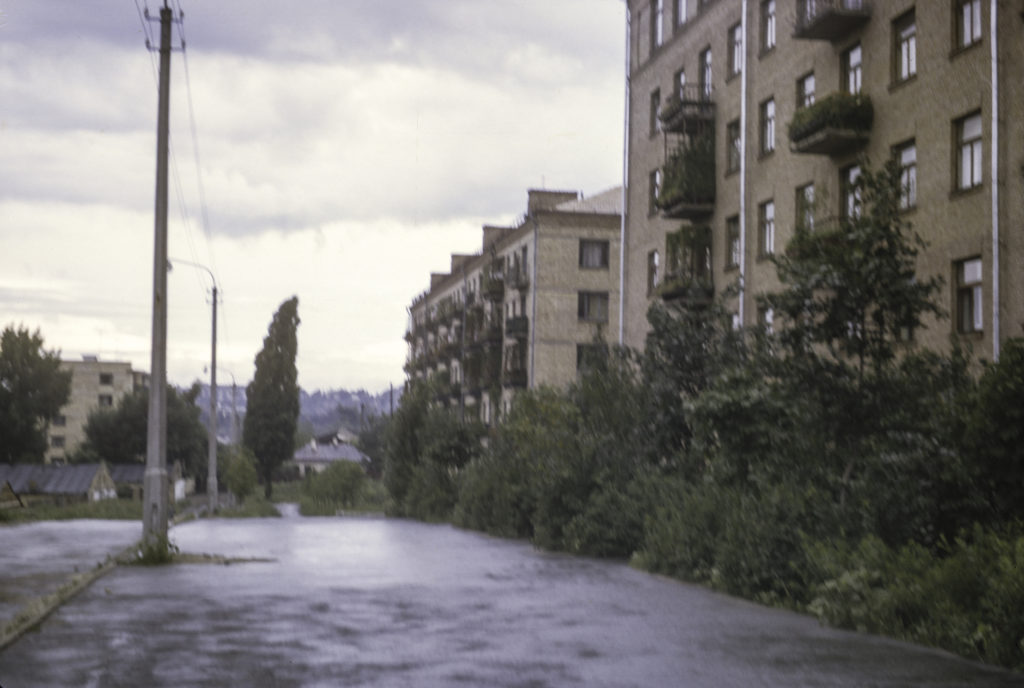
Our tour group actually had two leaders. One was the aforementioned Bob Barrett, who was an Uzbek specialist, and the other was Professor William Frey from Pennsylvania (I don’t remember which institution he was associated with). Actually, Professor Frey was supposed to have taught the Russian class in Munich, but he had to cancel out because his wife was ill. He did manage to come for the USSR trip, though, and he proved to be a jolly fellow and an excellent guide. He appears on the left of the following photo, which I shot in front of a Kiev bakery, where people were queued up waiting to purchase their daily bread.
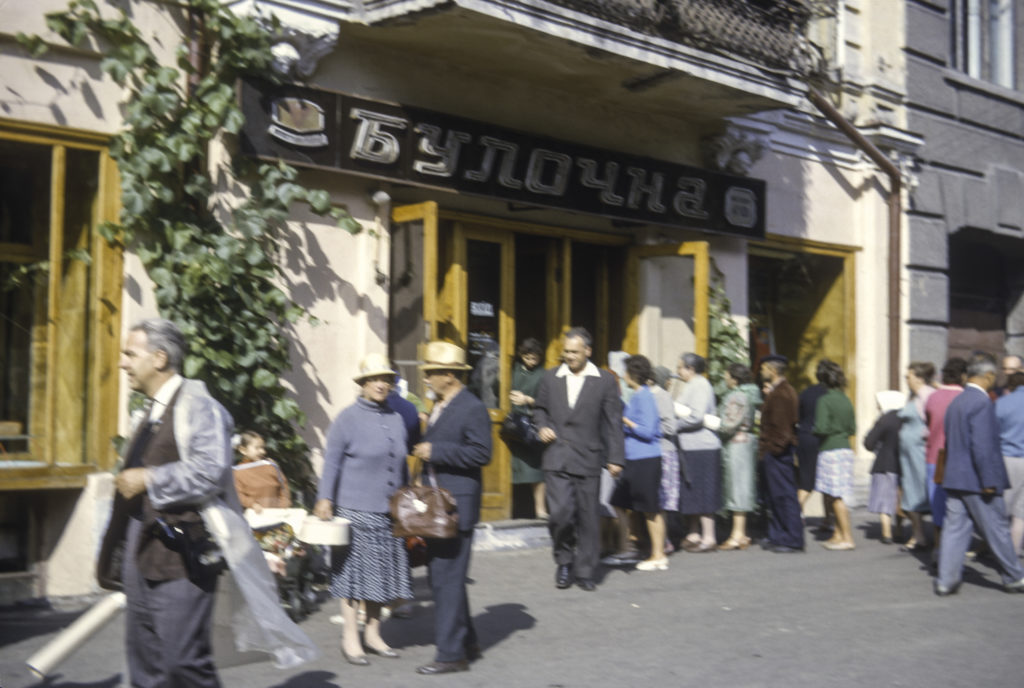
Professor Frey had a birthday while we were in Kiev, and the group wanted to get him a present. Kitty, one of the women in the tour group, volunteered to buy the present, and I agreed to keep her company, since she didn’t want to wander alone through downtown Kiev. In order to buy a present, though, she needed to get hold of some additional Soviet currency, because she didn’t have enough for a proper gift; and when we went to the bank to exchange some dollars for rubles, we found that it was a holiday and the bank was closed, though stores in general remained open. I was ready to quit and go back to the hotel, but Kitty insisted that there must be someplace or some way we could change money, so we wandered around the downtown area for hours looking searching in vain. I don’t remember whether we ever somehow came up with a birthday present for Professor Frey, but I did take the opportunity to snap a photo of downtown Kiev.
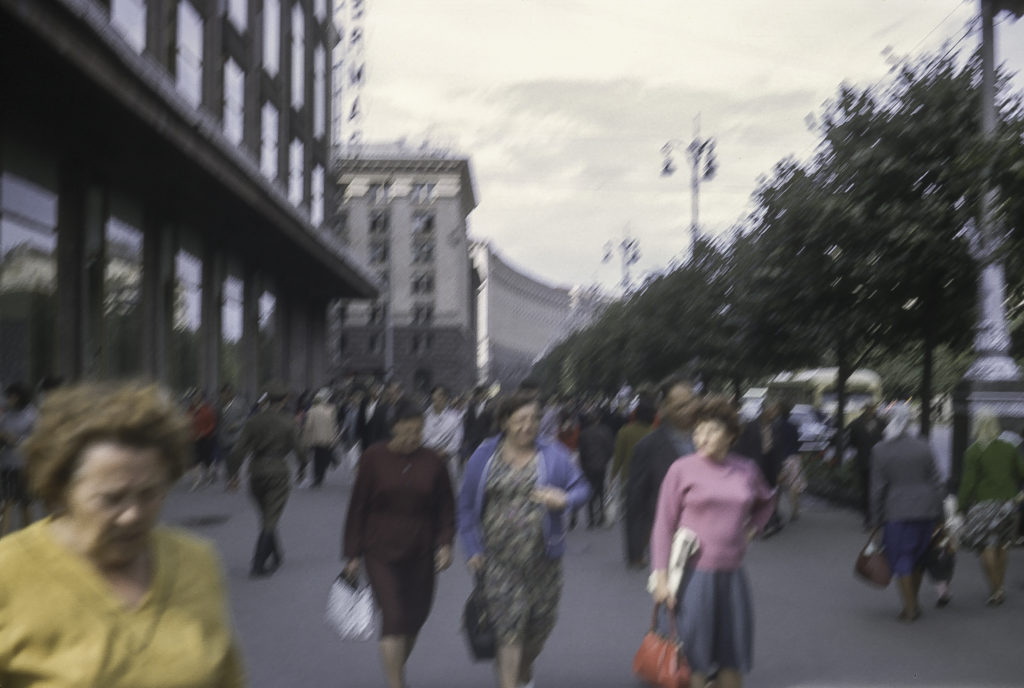
One of the high points of our stay in Kiev was a visit to the beach. Being from Southern California, surfing capital of the world, I wouldn’t have expected to find much of a beach in Kiev, but there were beaches on the banks of the Dnepr, complete with umbrellas, cabanas and sand though not with surf; and one afternoon Bob, Bill, Kitty, Jan, Diane and I went to one of them.
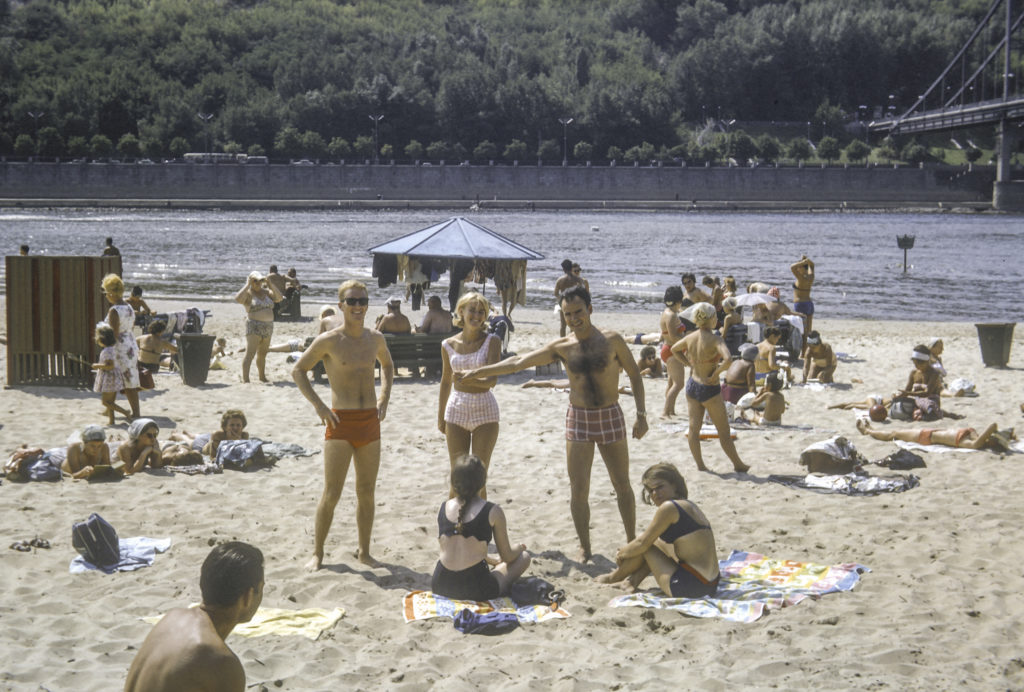
Whether it was because Bill did something annoying or just on general principles, we decided to bury Bill in the sand. Bill graciously went along with his own interment; Bob, Jan and Diane did the digging, while I shot pictures and Kitty read a book.
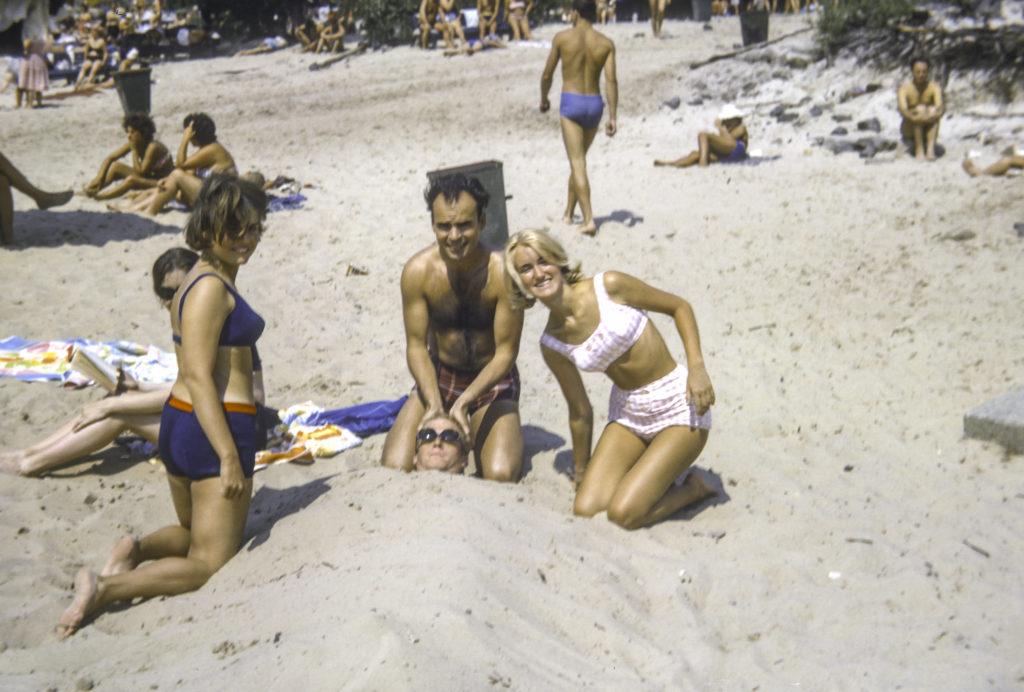
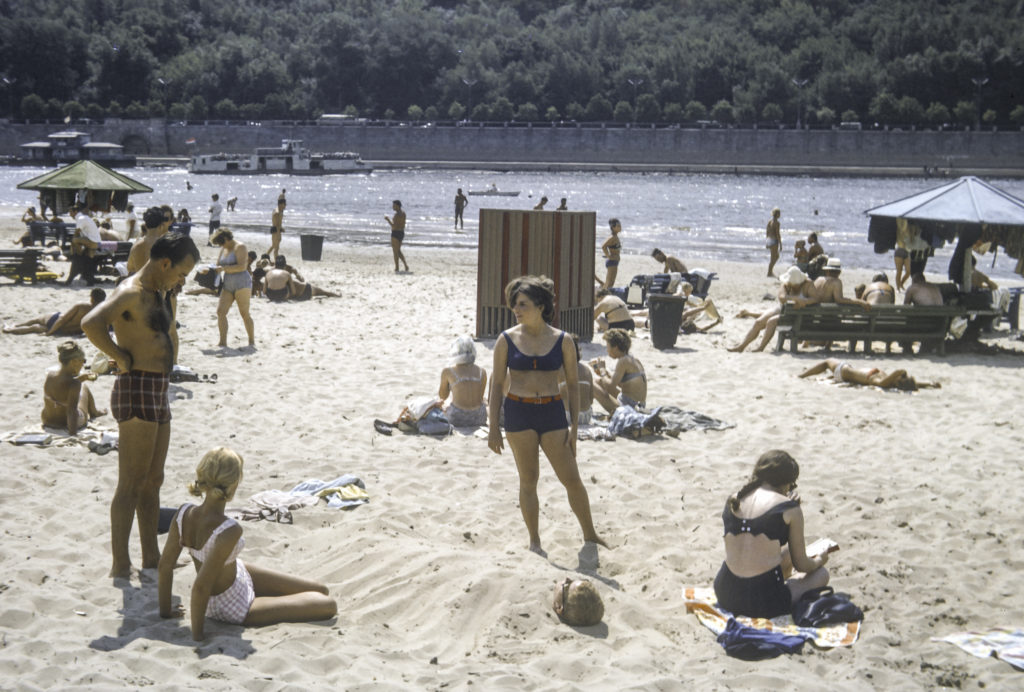
From Kiev we took a train back to Brest-Litovsk, which had also been our entry point to the Soviet Union. We expected the reverse of the process we had encountered upon our entry: we would debark from the train, go through customs and re-embark on the same train once the railroad-car “uppers” had been transplanted from the wide-gauge Soviet platforms to the narrower-gauge Western ones. This was not what happened, as it turned out.
First of all, going through outbound customs proved to be a more arduous process than on the inbound direction. Rather than a cursory examination of the contents of our suitcases on the train, we were subjected to a meticulous inspection in a closed room, where the border guards went through our suitcases item by item, asking searching questions about each piece they didn’t immediately recognize. This included tampons and feminine napkins, which apparently were not available in the USSR at that time (or for years afterward; I never saw evidence of them in 1972-3 either). The same was true for condoms. It was embarrassing, especially for the women, to have to explain the usage of these articles in our mostly inadequate Russian to the border guards. We thought that we were perhaps being subjected to extra scrutiny (not to mention irritation) because of our association with the Institute in Munich, but as it turned out, we got off easy compared to some of the other Western tourists.
The worst part, though, was being told that our nice train with its sleeping cars was being expropriated for the use of people more important than us, and that we would be put on a different train, which was not yet available, so we had to wait for the better part of a day in a hot, uncomfortable (not air-conditioned, of course) train station. I endured the ordeal by drinking lots of a sweet, mediocre sparkling wine, which was pretentiously labeled “Soviet Champagne”. At last, in the late afternoon, we were told that we could board our train. It turned out to be a bare-bones Polish train with no sleeping cars; we got to sit upright on hard wooden benches while the train clattered all night through Poland and into East Germany. We boarded the train at the same time as a British group, one of whose members had his camera taken away by the customs officials. In response to his bitter protests, they promised him that they would develop the film onsite to verify that he had taken no illegal pictures during his stay in the USSR, and if they found nothing incriminating, they would return the camera and film before his train left. When the time came to board the train, they still had not done so. He threatened to lie down on the track in front of the train if they didn’t give him the film before the train left. Finally, literally at the last minute, as the train was starting to pull out of the station, a border guard showed up and handed him the camera and the film, to everyone’s great relief. But then, as the train left the station behind, he took a look at the developed film. It was color film, and the Soviets had processed it as if it were black-and-white, wrecking it, so he lost all his pictures.
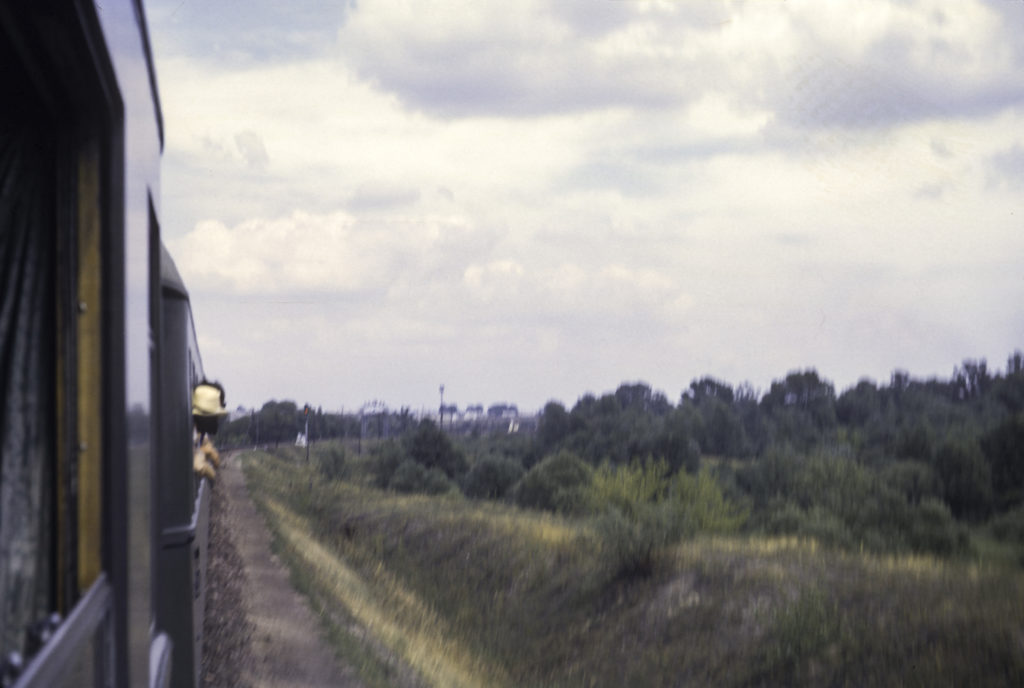
I don’t remember anything about the trip back from Berlin to Munich, probably because I was so groggy after not getting much sleep on the Polish train from Brest. I do remember that, after we got back to Munich, the staff of the Institute for the Study of the USSR took us to a beer hall and plied us with beer and pretzels while they pumped us for all the information they could get out of us on current conditions in the Soviet Union. So that’s the brief history of my career as a spy for the CIA.